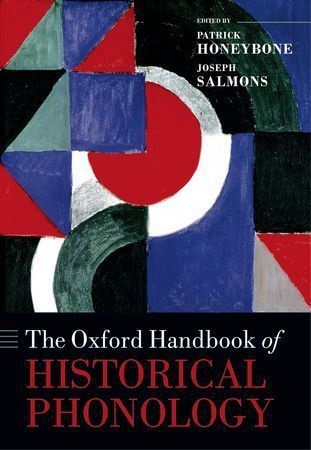Read more
Zusatztext Honeybone and Salmons have succeeded in compiling a useable, up-to-date, and comprehensive handbook that will prove an essential resource to generations of students and scholars interested in and working on any and all aspects of historical phonology. Informationen zum Autor Patrick Honeybone is Senior Lecturer in Linguistics and English Language at the University of Edinburgh where his main interests are historical phonology, phonological theory, and northern English dialects. He has published articles in English Language and Linguistics, Lingua, Language Sciences, and a range of other journals. He is the main organizer of the annual Manchester Phonology Meeting. Joseph Salmons is the Lester W.J. "Smoky" Seifert Professor of Germanic Linguistics. He is the author of A History of German, OUP 2012, and serves as executive editor of Diachronica: International Journal of Historical Linguistics. Klappentext This critical overview examines every aspect of the field including its history, key current research questions and methods, theoretical perspectives, and sociolinguistic factors. The authors represent leading proponents of every theoretical perspective. The book is a valuable resource for phonologists and a stimulating guide for their students. Zusammenfassung This book presents a comprehensive and critical overview of historical phonology as it stands today. Scholars from around the world consider and advance research in every aspect of the field. In doing so they demonstrate the continuing vitality of one of the oldest sub-disciplines of linguistics. The book is divided into six parts. The first considers key current research questions, the early history of the field, and the structuralist context for work on sound change. The second examines evidence and methods, including phonological reconstruction, typology, and computational and quantitative approaches. Part III looks at types of phonological change, including stress, tone, and morphophonological change. Part IV explores a series of controversial aspects within the field, including the effects of first language acquisition, the mechanisms of lexical diffusion, and the role of individuals in innovation. Part V considers the main theoretical perspectives including those of evolutionary phonology and generative historical phonology. The final part examines sociolinguistic and exogenous factors in phonological change, including the study of change in real time, the role of second language acquisition, and loanword adaptation. The authors, who represent leading proponents of every theoretical perspective, consider phonological change over a wide range of the world's language families. The handbook is, in sum, a valuable resource for phonologists and historical linguists and a stimulating guide for their students. Inhaltsverzeichnis Part I Introduction and Context 1: Patrick Honeybone and Joseph Salmons: Introduction: key questions for historical phonology 2: Robert Murray: An Early History of Historical Phonology 3: Joseph Salmons and Patrick Honeybone: Structuralist Historical Phonology: systems in segmental change Part II: Evidence and Methods in Historical Phonology 4: Anthony Fox: Phonological Reconstruction 5: Donka Minlova: Establishing Phonemic Contrast in Written Sources 6: J. Marshall Unger: Interpreting Diffuse Orthographies and Orthographic Change 7: Roger Lass: Interpreting Alphabetic Orthographies: early Middle English spelling 8: Martin Kümmel: The Role of Typology in Historical Phonology 9: Brett Kessler: Computational and Quantitative Approaches to Historical Phonology 10: Andrew Wedel: Simulation as an Investigative Tool in Historical Phonology 11: Warren Maguire: Using Corpora of Recorded Speech for Historical Phonology 12: Matthew J. Gordon: Exploring Chain Shifts, Mergers, Near-mergers as Changes in Progress Part III: Types of Phonologi...

